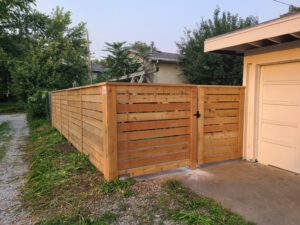Labor is among the largest expenses incurred by warehouse or distribution center operations. Labor management systems help reduce these costs by improving productivity and efficiency.
Generally an add-on to warehouse management systems (WMS), labor management systems evaluate employee and warehouse productivity based on engineered labor standards. They track and analyze warehouse transaction types, including receiving, put-away, order picking, and cycle counting. Click https://www.taskforcelabor.com/ to learn more.

Productivity analysis is the process of examining data and metrics to gauge how productive your employees are in comparison to your business goals. You use this information to identify areas where your employees need further training or direction, which can ultimately lead to increased employee efficiency and productivity. Several productivity measurements exist, including capital, material, and labor productivity. Choosing the right measurement type depends on your specific needs and industry.
A partial factor productivity method measures output relative to a single input. For example, a designer could be counted on how many dolls they produced per three hours of work. This method provides a clear picture of one worker’s performance and is easy to interpret and improve. Still, it doesn’t consider other inputs like the amount of materials used or the cost of production.
In contrast, a multifactor productivity (MFP) measure combines labor and materials to show how much total output is produced per unit of combined inputs. MFP is more difficult to calculate and compare than partial factor productivity, but it gives a better picture of the overall impact of all production factors.
A final MFP measure is a total output measure that includes all labor, material, and capital inputs. That is the most accurate way to determine MFP, but it is not easy to analyze and improve because it requires a lot of data collection.
Using the Expected Resource Requirement Analysis concurrent request, you can compare actual warehouse transactions against existing Labor Management standards and estimate resources, time, or both required to complete outstanding tasks. This information helps you plan for future demand and make informed decisions about hiring, inventory levels, shipping procedures, and other business processes.
You can view individual productivity ratings by clicking the User Ratings tab in Labor Management. You can search for ratings by an individual’s name, current day, all dates, or a selected time frame. Each user is given a score for the three tracked times in Labor Management: travel, transaction, and idle. This score reflects how the individual performs to the system’s expectations and is determined by a complex rating algorithm that considers all recent transactions for each user.
A non-standardized transaction represents a warehouse task that Labor Management cannot match to an existing labor standard. Many of these transactions can lead to inaccurate resource estimation and productivity analysis. To decrease the number of non-standardized transactions, you must create labor standards for all user transaction types in your warehouse.
You can refine labor standards as you continue to use your warehouse. In addition, you can add new labor standards for transactions your users perform and delete labor standards for transactions that your users no longer serve in the warehouse. This ensures that your employee productivity reports are accurate and provide a more complete picture of labor productivity in the warehouse.
The definition of a “labor organization” in the LMRDA is broad enough to include any group of employees so organized that it has as its primary purpose the advocacy or pursuit of the interests of the members in dealing with employers regarding grievances, labor disputes, wages, hours, or other terms or conditions of employment. This includes any organization, agency, employee representation committee, group, association, or plan, whether such organizations are collectively bargaining, and any conference, general committee, or joint or system board of a labor organization subordinate to a national or international union.
Using the Standardize Lines concurrent request, you can create new labor standards by importing data from previous analyses. The proposal converts actual times to expected times for all the transactions in your warehouse. The result is a set of standardizations that you can use to compare the performance of individuals and groups.
The Ratings Algorithm and Transaction Performance concurrent requests evaluate the performance of individual workers by comparing their completion times to those of their peers. The algorithm assigns each individual a score and a rating that indicates how well the individual’s transaction times compare to expectations.
Labor management systems use an algorithm to evaluate employees and warehouses on how quickly they complete tasks. This information helps managers decide about compensation, incentives, training, and staffing needs. It also aids in improving productivity and customer service, keeping costs to a minimum. However, no matter how much you invest in automation, robotics, and other technologies, your people remain the most critical assets in your warehouse or distribution center. They offer the most opportunity for delivering a positive customer experience with short cycle times and demanding value-added service requirements.
A workforce system offers warehouse and DC managers valuable analytics and reports and real-time performance visibility and helps them keep costs to a minimum while maintaining productivity. The system can help warehouses and DCs improve employee satisfaction by establishing clear goals, objectives, and career paths for employees to advance through the company and provide critical data to ensure that the right employees are assigned to the right jobs.
It can provide various reports to help you identify areas for improvement and increase efficiency, including inventory accuracy, order fulfillment rates, and employee time management. It can also assist with optimizing the labor used in warehousing and logistics by monitoring and identifying the best time to process orders, ship goods on time, and maintain accurate records.
The rating algorithm in a workforce system uses transaction records to determine an individual’s rating level and score. This is then compared to the established standards for that individual, providing a detailed evaluation of the performance of each worker and the warehouse. It is important to understand how this works so that you can properly implement the tool and get the most benefit from it.
You must first configure your workforce management system by setting up the appropriate parameters and configurations in Oracle Applications. Then, you must create the required labor standards for your warehouse task execution modes. You must assign a sequence number to each labor standard you make for your grouped task analysis. Each sequence number corresponds to a different way of warehouse task execution, such as putaway and staging move. The system then compares the transaction time, travel time, and idle time for each grouped task against other matching labor standards to determine an individual’s performance level.
Using a labor management system, you can determine the most cost-effective operating methods and procedures to reduce fulfillment costs while increasing throughput and improving customer service. The key to achieving these benefits is a well-defined methodology for labor standards. This may include a time and motion study or, as an alternative, an operational review process that imports existing transaction data into Labor Management to use as labor standards. The data is then refined to ensure accurate reporting and forecasting.
When you enable Labor Management on the organization parameters window, you configure the labor-management setup parameters to define your operating methodology and to establish labor standards that the system uses for performance analysis and warehouse productivity reporting. The default settings for these parameters are based on the results of a time and motion study conducted by your operations team.
You can view the resulting reports for the warehouse operation from the Labor Management Analysis page. The two primary analysis reports are the Expected Resource Requirements Analysis and the Labor Productivity Analysis. These analyses are based on data the system records in the warehouse during the time frame specified in the Expected Resource Requirements and Labor Productivity Analysis configuration parameters.
The system calculates the resource requirements for each outstanding task activity in the warehouse based on these parameters, as well as the current available resources and expected employee utilization rates. This enables you to determine whether the amount of outstanding work will exceed the capacity of your workforce.
This information is displayed in a table on the Labour Management Summary page and included as part of the work outstanding listing in the Work Outstanding report. The system considers tasks scheduled for the future period you specify in this parameter as working great and factors these special tasks into resource requirement analysis reports.




 Many industrial operations generate hazardous waste materials. Hazardous wastes are a complex category of regulated wastes that must be handled and disposed of according to federal, state, and local regulations. In addition, the disposal of these wastes requires special precautions to prevent environmental damage. If not handled correctly, hazardous waste can lead to contamination of soil and water supplies. It can also harm human health, which may require emergency cleanup. To minimize the risk of environmental contamination, it is important to hire a rubbish removal service that specializes in handling and disposing of hazardous waste.
Many industrial operations generate hazardous waste materials. Hazardous wastes are a complex category of regulated wastes that must be handled and disposed of according to federal, state, and local regulations. In addition, the disposal of these wastes requires special precautions to prevent environmental damage. If not handled correctly, hazardous waste can lead to contamination of soil and water supplies. It can also harm human health, which may require emergency cleanup. To minimize the risk of environmental contamination, it is important to hire a rubbish removal service that specializes in handling and disposing of hazardous waste.




 Steel structures can be used to build various buildings, including warehouses, churches, storage centers, and even office spaces. They can also span longer distances, making them an excellent option for larger structures. Steel building frames can be designed to meet local area codes and load limits, which helps ensure that your new structure will be safe and up to code.
Steel structures can be used to build various buildings, including warehouses, churches, storage centers, and even office spaces. They can also span longer distances, making them an excellent option for larger structures. Steel building frames can be designed to meet local area codes and load limits, which helps ensure that your new structure will be safe and up to code.




 Site Preparation
Site Preparation